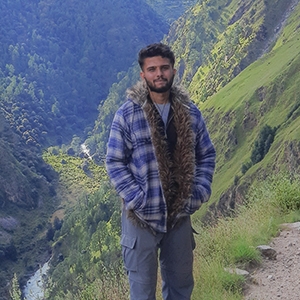Lukla Airport
The Tenzing Hillary Airport is the first place that visitors encounter before commencing their trek to Everest Base Camp. At an altitude of 2,850 m, Lukla airport is a top-notch aspirant when it comes to the world's treacherous airports with extremely short take-off and landing strips. It will take around 30-40 minutes of flight to reach Lukla from Kathmandu, and the weather here is always hard to envision. The Lukla Airport was built in 1964. The construction was done under the supervision of Sir Edmund Hillary, and until recently in 2001, the airport runway wasn't even adequately paved. The airport is surrounded by steep, mountainous terrain. At one end there is a wall and at the other an abrupt drop into the valley below. The airport runway is unduly short at just 1,729 feet long. The weather in Lukla can often be thoroughly different from Kathmandu and repeatedly changes while the airplane is on its way. In such situations, twin otters turn around and return to Kathmandu. Cancellations from Lukla are common as afternoons are so frequently cloudy that most flights are scheduled for the early morning.
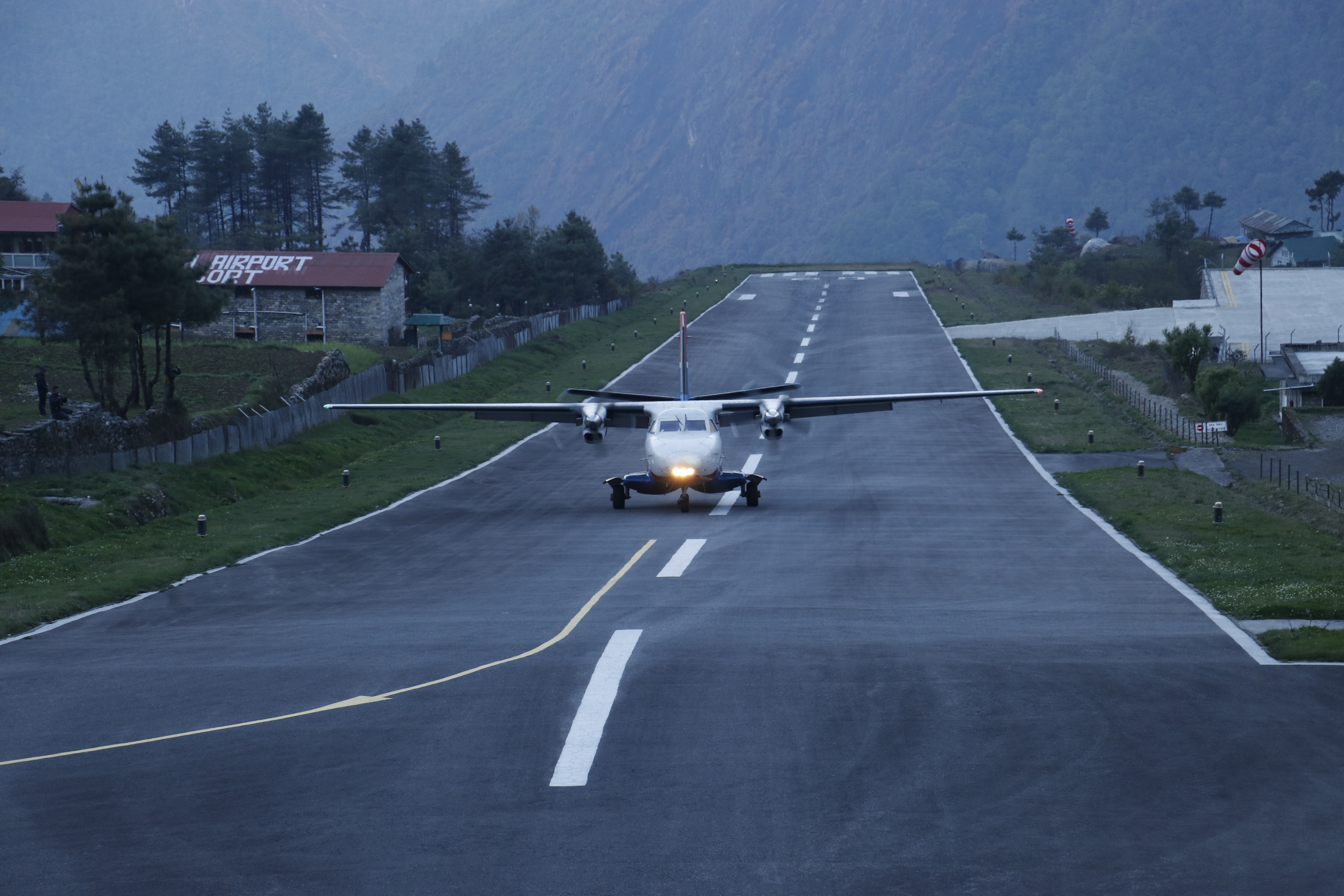
Namche Bazar
On your 2nd day of the trek, you will reach Namche Bazar by transiting the Hillary Bridge. Located in Khumbu Pasanglamhu Rural Municipality, Namche is situated at an altitude of 3,440 m on the slope of an arch-shaped mountain, with dazzling views of massive Himalayan peaks from anywhere in the valley. Namche Bazar is a central hub and vital acclimatization stop for trekkers and it's evolved from a trading hub to a tourist destination in itself. Traditionally the village was a trading junction, with locals bartering yak cheese and butter for agricultural goods grown at lower altitudes. However, after Tenzing Norgay and Sir Edmund Hillary's victorious climb of Everest in 1953, the dynamics of the village revised forever. Namche has thrived from tourism movements and trade and is the wealthiest district in Nepal. Namche Bazar has a lot to offer as most of the trekkers spend two nights here, they can explore many stunning things that this place has to offer. Such as:
- Buy some amazing handicrafts from the main street of Namche
- Eat and drink different dishes explore different beautiful bakeries and restaurants
- See the rock paintings
- Check out the Sherpa Museum
- Watch afternoon or evening movie shows in one of several venues
- Visit Namche Monastery
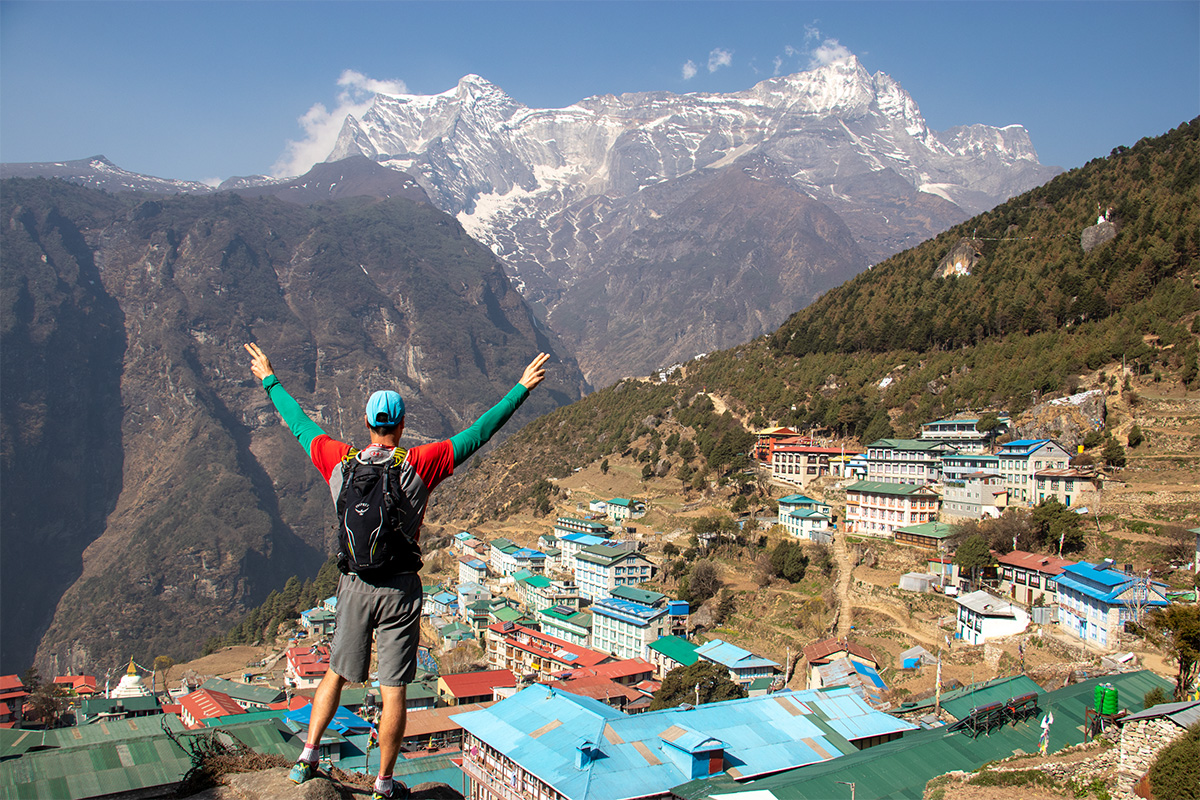
Everest View Point
Trekkers get the opportunity to hike to Everest viewpoint on day three as their acclimatization hike. The early morning hike to the viewpoint offers you a stupendous 360-degree view of several mountain peaks which includes Lhotse, Thamserku, Kusomkangru, Kongde, Everest, and Ama Dablam, Tabuche, Cholatse, and so on. It takes about two hours from Namche to reach the top. After fronting majestic mountain ranges from the viewpoint, one can visit the highest place hotel (3800 m) in the world i.e. Hotel Everest View. This secret venue will be perfect for your lunch at the Everest viewpoint which is one of the top places to visit in your Everest Base Camp trek. You can get your favorite snacks with a sip of coffee and enjoy the squeaky-clean view from there. It is also a flawless place from which to explore the nearby villages and enjoy the beautiful landscapes blessed with evergreen fir trees, shrubs, and rhododendron forest. This viewpoint hotel was built with a motto that guests from all over the world can come and enjoy a 360-degree view of the mountains, relish Mt Everest from every room, and be regaled with great hospitality. This viewpoint will also lead you to explore ravishing Khumjung Village, Tengboche Monastery, Khunde Peak, and Mongla village. Everest viewpoint will surely make your morning and propose to you the total excitement for the trek the next day to Everest Base Camp.
Sherpa Barista Cafe, Namche Bazaar
This wonderful venue in Namche Bazar serves you the best bakery and food items in the Everest region. It is also considered the world's highest bakery cafe which is popular among many trekkers around the world. The hospitality and food there are so good and the owner of the cafe is so cordial. This cafe provides you free wifi services along with a cozy environment with warm hospitality and good food, bakery items, and for sure a perfect cappuccino, espresso, and americano. This cafe also has big-screen television for live streaming of football matches and screening of several famous documentaries. The opening hour of this cafe is 06:15-22:00. Also, if you want to prepare for a special occasion you can try calling this number: 038 540490. Other major places for food and beverages in Namche are :
- Irish Pub
- Beans Bucks Bakery Cafe & Bar
- Namche Bakery Cafe
- Hermann Helmers Bakery
- Cafe Danphe Bar
Tengboche Monastery
Also known as Dawa Choling Gompa, this Tibetan Buddhist Monastery of the Sherpa community is situated at an elevation of 3,867 meters. It is located in Tengboche village of the Khumbu Region. Trekkers can visit this ancient monastery on day four of the Everest base camp trek. You can also encounter the Everest range along with several other mountain peaks from Tengboche. The monastery is the largest in the Khumbu region and holds the annual Mani Rimdu festival in November where the festival is filled with dance and music in richly colored costumes and masks representing the deities. This monastery is located at the confluence of the Dudh Koshi and the Imja Khola rivers. You can witness ancient remains in this monastery along with the chantings and meditation of the monks. Tengboche is also considered the "Sacred Site Trail Project '' of the Sagarmatha National Park. This monastery falls en route to Everest Base Camp and the building of the monastery stands up on a knoll at the end of a big spur, which is flung out across the direct axis of the Imja river. Although the establishment of Tengboche Monastery was prophesied a long time ago, it was established in 1916 in its present location. Ngawang Tenzin Norbu, who was considered the fifth incarnation of Sangwa Gorje, sanctified Lama Gulu to inaugurate the Tengboche monastery at Tengboche village. As a result, the monastery was founded. This monastery is the first celibate monastery of Vajrayana Buddhism under the Nyingmapa lineage.
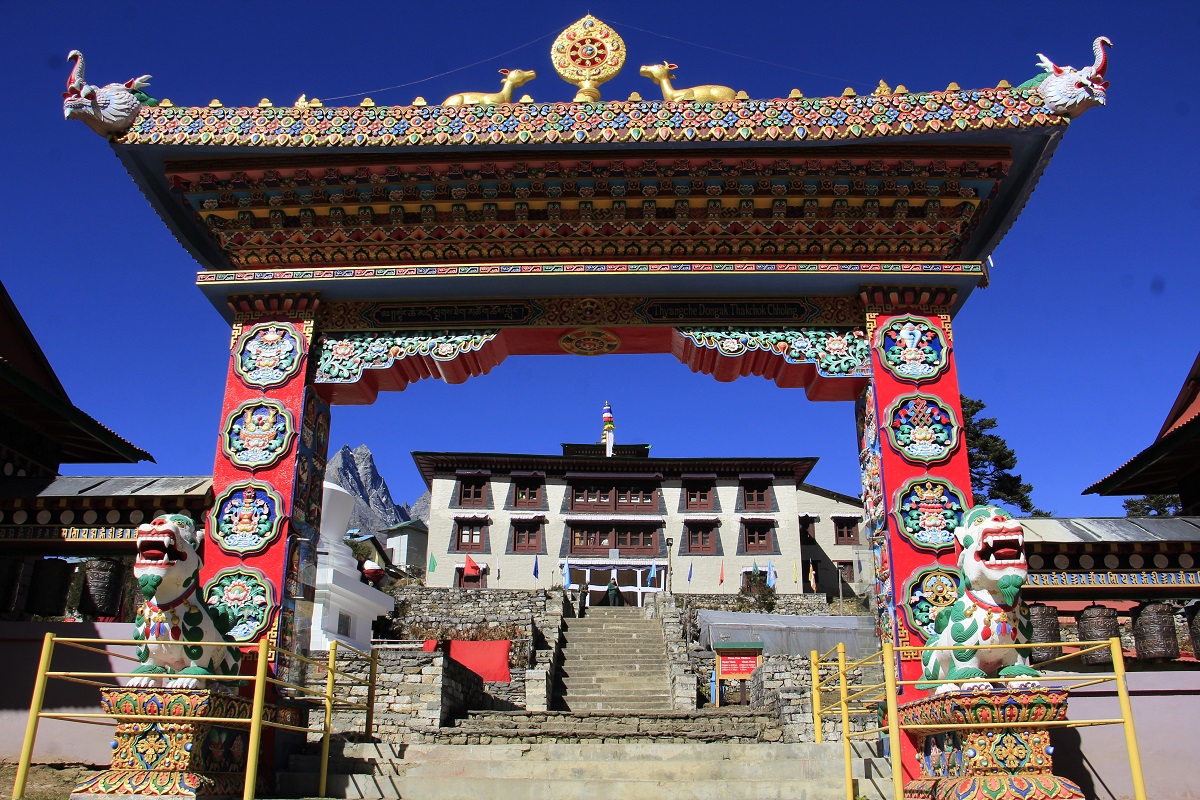
Thukla Memorial Pass
On day seven of the Everest Base Camp Trek trekkers have to cross Thukla Memorial Pass. This is a memorial park constructed in the Thukla area to remember the deceased climbers. The 4,700 m high Thukla pass is the final point to reach the Everest Base Camp. From there you can encounter the mountains at 360 degrees. This pass leads to the tiny hamlet of Lobuche where trekkers spend a night before their final approach to the base camp. The top of the pass has over 100+ memorials of climbers who have lost their lives while endeavoring to climb Mt Everest. A pillar has been created in the park in memory of more than two hundred climbers from around the world. Most of the climbers have died due to bad weather and avalanches. The village of Dughla lies at the very end of the Khumbu glacier and is usually just a lunch stop for many trekkers.
Panoramic views of the world’s highest mountains
During your Everest Base Camp Trek, it is typical to be surrounded by rocketing mountain peaks in every direction. From the first day from Lukla to the base camp, there will be no compromise with the view of the stunning mountain ranges. You can locate exquisite mountain ranges every day on your Everest Base Camp trek. From base camp, you'll be able to witness the eye-catching mountains including Pumori, Langtren, Khumbutse, Nuptse, Everest, and so on. These stupendous panoramic views of the mountains will surely take your breath away and the experience will be glued with you for a lifetime. Commencing from Lukla, the trail takes you up to Tengboche which greets you with a 360-degree view of the glorious Everest panorama, accompanied by Nuptse, Tabuche, Nuptse, Thamserku, and Amadablam. The trail also offers splendid views of other peaks such as Khumbila (God of Khumbu), Kwangde, and Kangtega.
Everest Base Camp
This world-renowned base camp is the definitive destination and a major highlight for every trekker. On your eighth day, you'll be at base camp to encounter the mountain life of climbers alongside the immense Khumbu Glacier. This destination is situated at an altitude of 5,364 m. The base camp in Nepal is the South Base Camp, while North Base Camp is in Tibet. Everest Base Camp is a small transient hamlet on the foot of Khumbu Glacier which is also deemed a mini-mountain city with a bustling movement of climbers and trekkers. EBC is belted by some of the most splendid peaks on earth. Each spring, hundreds of international mountaineers sit temporarily at base camp to make a successful ascent of the world's highest peak. Everest Base Camp will astonish you with glorious peaks such as Tabuche, Cholatse, Pumori, Lingtren, Nuptse, and so on. Most trekkers get in trouble by altitude sickness at base camp, other than that it is a completely lifetime surreal experience. So, get ready to witness the most prominent and bustling base camp in the world.
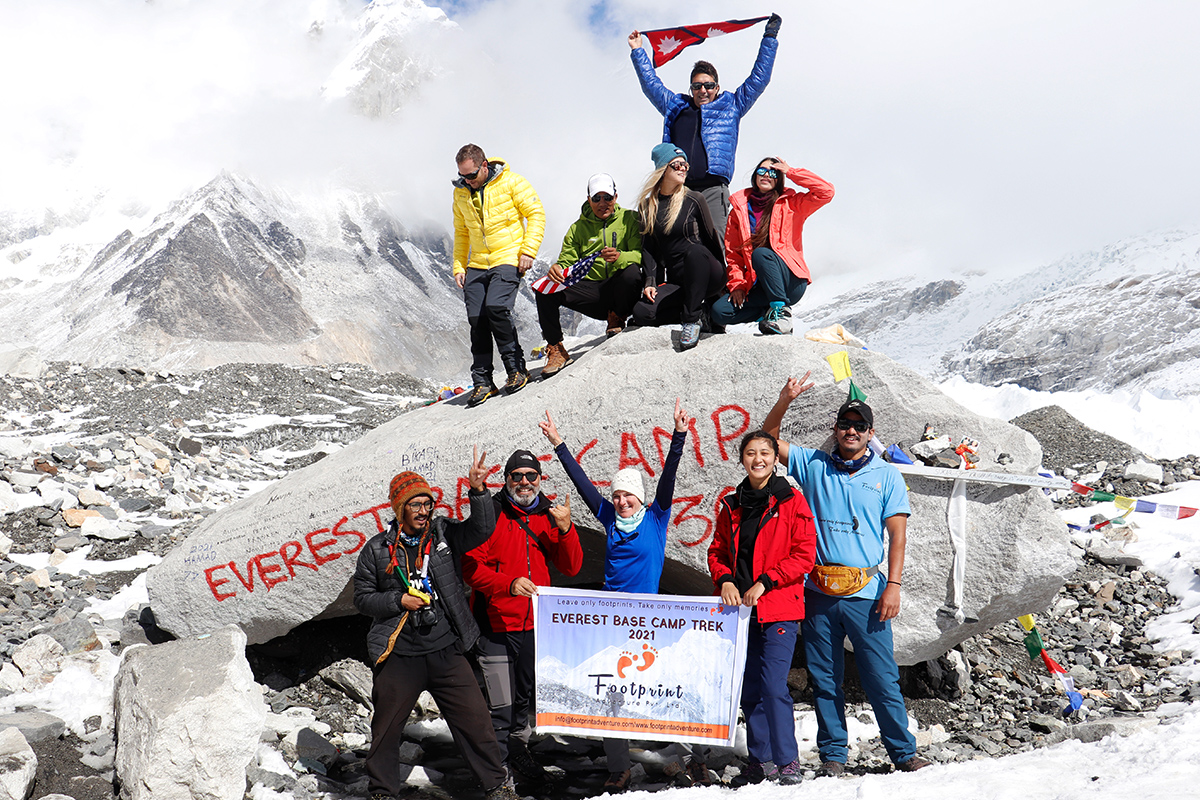
Kala Patthar Viewpoint
After the exploration of Everest Base Camp, trekkers head for a hike to Kala Patthar which is situated proudly at an altitude of 5,545 m, which takes a good 2-3 hours ascending from Gorakshep village. A hilltop covered with black stone is located on the southern ridge of the diamond-shaped mountain 'Mt Pumori'. This widespread viewpoint of Nepal offers a dazzling view of Pumori, Khumbu Glacier, Khumbutse, Lingtren, Everest, Lhotse, and many other snowy peaks. Most trekkers select to hike in the morning to encounter majestic sunrise unhurriedly rising amidst the highest mountain in the world. Kala Patthar is more than just a viewpoint. You will be astounded by the kaleidoscopic rays of sunrise and sunset pounding the snow-capped mountains. Kala Patthar is also known as 'Black Stone' and is a well-famed landmark in the Everest region. This famous site is one of the top things to explore during your EBC trek, and also provides a fantastic 360-degree panoramic view of the Mahalangur Himalayan Range. Kala Patthar lies 9.3 km away from the Everest Base Camp. The average temperature there during the winter remains around -17 degrees celsius, which is the coldest time of the year. In the summer seasons, temperatures ascend up to 22 degrees during the day, dropping to around -5 degrees during the nighttime. Situated at an altitude above 5,000 m, Gorakshep has very unforeseen weather that can vary in the blink of an eye. Therefore, it is best to travel during the favorable seasons i.e. autumn and spring seasons.
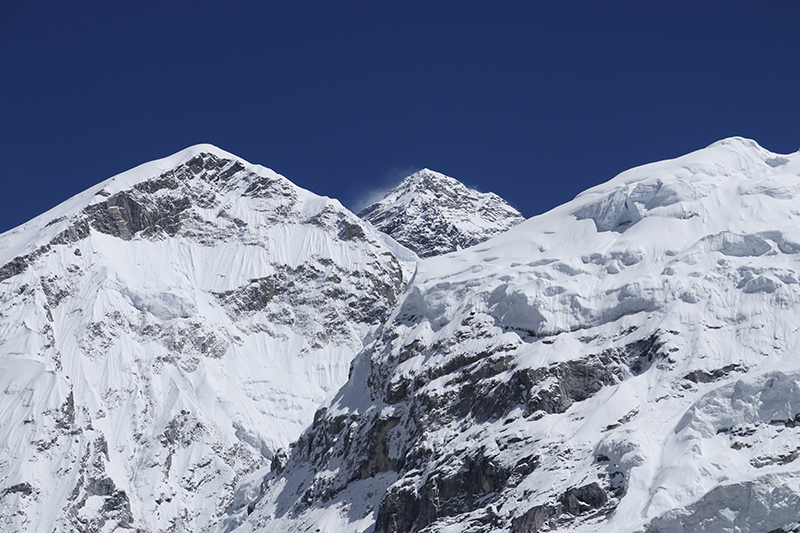
Exotic Wildlife
This category also fits in the list of top things to explore during your base camp trek. Trekkers have to pass through the Sagarmatha National Park, a popular national park in Nepal during their Everest Base Camp trek, which is home to a number of rare mammal species including musk deer, Snow leopard, Himalayan tahrs, martens, Himalayan wolves, and so on. In this region, the available oxygen and the temperature decrease with altitude. Hence, the animals that are found here are adapted to living on less oxygen and cold temperatures. The forests also provide habitat to at least 118 species of birds. In case you get lucky, you'll be able to encounter yellow-billed clough, Himalayan monal, blood pheasant, and red-billed chough. The wildlife of this region is like jewels in the crown of Khumbu's natural beauty. Trekkers are likely to encounter glimpses of these unique faunas that make the trekking journey more pleasant than it already is. Rich in alpine vegetation, trekkers can explore the amazing exotic wildlife of the Everest region. The wild animals are generally hard to encounter, one can increase their chances of encountering them by exploring there during the winter months of January and February. Hence, exotic wildlife is also one of the top things to explore during your Everest Base Camp Trek.
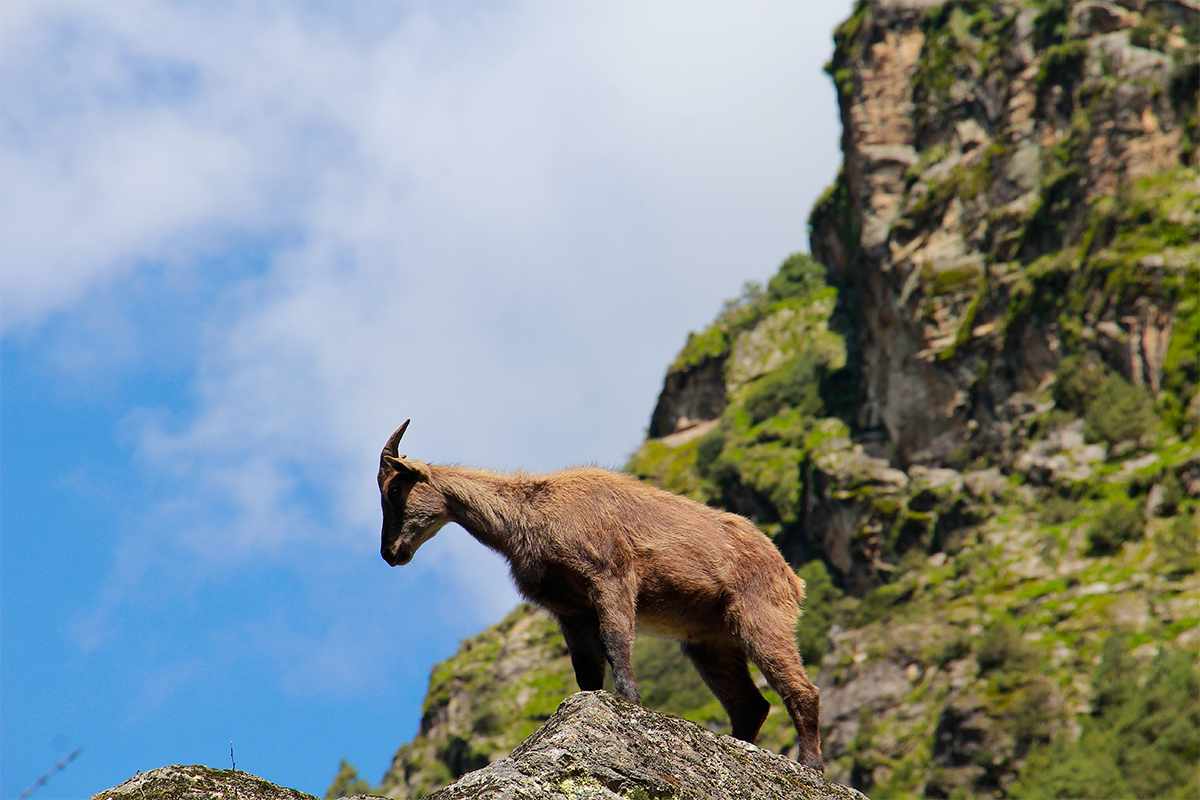
Everest region is full of surprises with the vast blessings of mother nature. You can explore the sensational attractions that this trial has to offer. These are the top things to explore during your EBC trek. The rich culture of the Nepalese people and the wide range of landscapes provides amazing life experiences. At the same time, trekking must meet all safety requirements, so it is best to cooperate with a professional organizer of such trekkings. You can contact us for these trekkings to encounter the best things during your Everest Base Camp trek.








